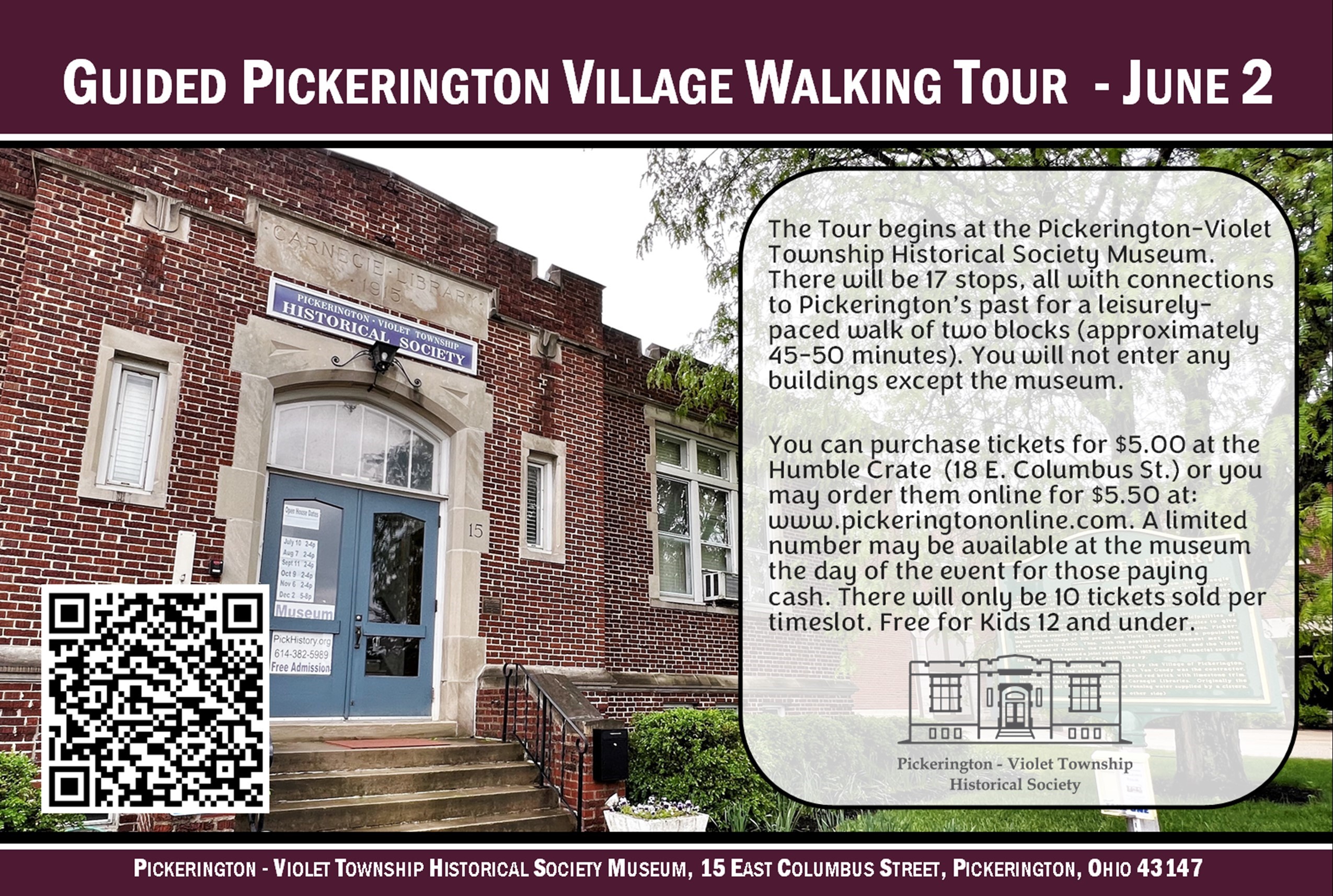

Photo courtesy of the Pickerington-Violet Township Historical Society.
April 9, 2021
To the gentleman who outbid the Pickerington-Violet Historical Society for the “Pickerington” train depot sign, the members hope, “We hope you enjoy it as much as we would have.”
On March 28, four representatives from the Historical Society drove more than 400 miles to Denver, Pennsylvania to attend the Morphy Auction entitled, “Automobilia, Petroliana & Railroadiana”. The group intended to bring home a seven-foot “Pickerington” sign which originally adorned the village’s depot.
“We’d like to thank the gentleman from Bexley who saw the Pickerington sign in the Maine Antique Digest and thought it should come back to Pickerington,” Historical Society President Peggy Portier said. “He took the time to drive to Pickerington to bring it to the attention of Mayor Lee Gray. Mayor Gray agreed and contacted us.”
The Historical Society jumped at a chance to claim the sign.

Photo provided by the Pickerington Historical Society
“We tried to buy it at the Huntwork auction five years ago, but were out bid by a collector there, too,” Portier said. “We would love to have it in our display about the railroad at our museum (15 East Columbus Street).”
At the previous auction, the winning bid for the sign was $800.
Morphy Auction’s website described the item as a, “Cast iron “Pickerington” New York Central station sign. Has old, smaltz black painted background, heavily deteriorated, with gold painted border and lettering. Mounting bosses intact. Back of sign has old deteriorated black paint.”
(Smaltz is a time-old tradition of making a long-lasting textured sign background by embedding aggregate smalt made fine pigmented glass or colored sands. Smaltings were most popular from 1865-1935. – Letterhead Sign Supply)
The auction house estimated the value of the sign to fall between $800 to $1,500.
To fund the purchase, the Historical Society solicited the community for donations.
“We had collected about $900 before we left and have receive a few more donations since returning,” Portier said. “We offered to return everyone’s money, but, so far, the donors we’ve been in touch with have said to keep the donations to use for other needs. We appreciate their thoughtfulness.”
About 30 bidders attended the event in-person at the Morphy Headquarters which, according to its website is, “one of the largest under-roof auction houses, spanning over 45,000 sq. ft. The pride of the facility is the stylish auction room, featuring comfortable theater-style seats equipped with fold-over lap desks and cup holders, a marble floor and decorative tin ceiling with ambient lighting.”
Despite not acquiring the sign, the group enjoyed the trip.

“The auction was very well run with very comfortable seating and free lunch,” Portier said, “We didn’t know about the free lunch, or we wouldn’t have had a big breakfast at the hotel! I’ve been to many auctions, but never one like this. Usually, you’re outside in the hot sun or miserable rain and buy food out of a trailer if you’re lucky.”
In addition to those attending in-person, there were people bidding online and on the phone.
Bidding for the “Pickerington” sign began at $400 and continued through 44 bids.
“He won the bidding at $6,000, so he had to pay $7,200 for it (there was a 20-percent fee on top of your bid),” Portier said. “We would have had to bid $6,500 to stay in the running and I’m sure he would have bid $7,000. We just couldn’t justify paying that much.”
Although the auction house did not divulge the identity of the winning bidder, a bidder vying for a different lot told the Historical Society members that the sign had been purchased by “a collector with very deep pockets.”
The other members of the Historical Society Board who rode along on the adventure were Fiona Spears (Treasurer), Maggie Arendt (Publicity Chairmen) and Barbara Freeman (Board Member-at-Large).



















